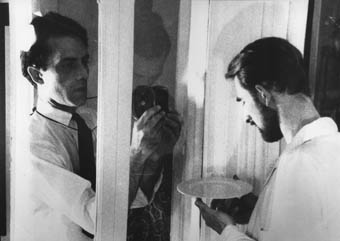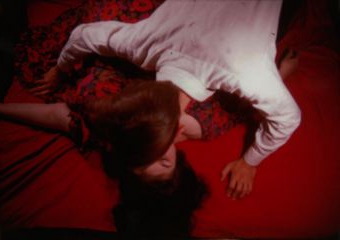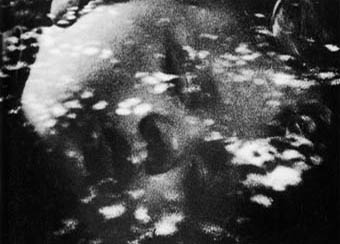TONY CONRADLondon Tate Modern13-15 June 2008Tony Conrad is a pivotal figure in contemporary culture. His multi-faceted contributions since the 1960s have influenced and redefined music, filmmaking, minimalism, performance, video and conceptual art.
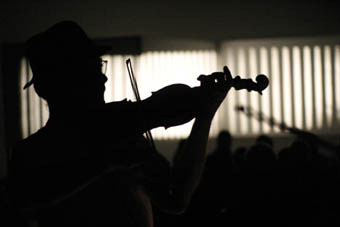 2004 performance of Ten Years Alive on the Infinite Plain (1972)
2004 performance of Ten Years Alive on the Infinite Plain (1972)Known for his groundbreaking film
The Flicker, his involvement in the Theatre of Eternal Music and the evolution of the Velvet Underground, and collaborations with a host of luminaries including Jack Smith, John Cale, Mike Kelley and
Henry Flynt, Conrad is a radical artist who challenges our understanding of art history.
This special weekend event at Tate Modern will feature a major new performance for the Turbine Hall and screenings of his extraordinary film and video work.
Tony Conrad curated by Stuart Comer, Alice Koegel and Mark Webber.
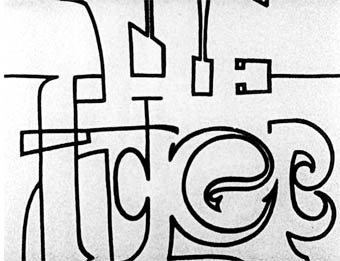 The Flicker (Tony Conrad, 1966)
The Flicker (Tony Conrad, 1966)Minimal cinema with maximal effect. Few films provide the intense, stroboscopic viewing experience of
The Flicker, a non-objective film composed only of opaque and clear frames, and a pulsing electronic soundtrack. Conrad’s cinematic debut still astounds audiences four decades after its creation, and will be screened together with other works exploring audio-visual harmonics and the radical production processes of cooked and electrocuted films.
Tony Conrad, The Flicker, 1966, 30 min
Tony Conrad, Curried 7302, 1973, 2 min
Tony Conrad, 7302 Creole, 1973, 1 min
Tony Conrad, 4-X Attack, 1973, 2 min
Tony Conrad, Film Feedback, 1974, 14 min
Tony Conrad, The Eye of Count Flickerstein, 1967/75, 7 min
Tony Conrad, Articulation of Boolean Algebra for Film Opticals, 1975, 10 min excerpt
Beverly & Tony Conrad, Straight and Narrow, 1970, 10 min
The screening, introduced by Tony Conrad, will be followed by a drinks reception to celebrate the publication of
Beyond the Dream Syndicate: Tony Conrad and the Arts after Cage by Branden W. Joseph (Zone Books/MIT).
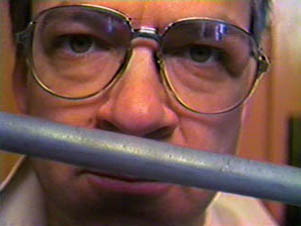 In Line (Tony Conrad, 1986)
In Line (Tony Conrad, 1986)Tony Conrad investigates the conditions of video production and presentation in a series of tapes which deconstruct or re-appropriate the techniques of TV. Exploiting the reflexive nature of the medium, he critiques the electronic image and notions of history, theory and authority with an irreverent sense of humour. Postmodernism was never this much fun!
Tony Conrad, Concord Ultimatum, 1977, 10 min excerpt
Tony Conrad, Redressing Down, 1988, 18 min
Tony Conrad, Ipso Facto, 1985, 7 min
Tony Conrad, Lookers, 1984, 4 min excerpt
Tony Conrad, Egypt 2025, 1986, 13 min
Tony Conrad, No Europe, 1990, 13 min
Tony Conrad, Accordion, 1981, 5 min
Tony Conrad, In Line, 1986, 7 min
The artist will introduce this programme of rarely seen works.
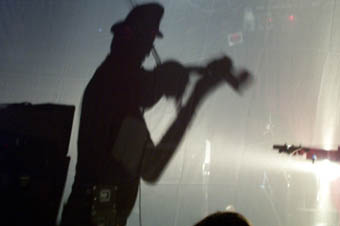 Tony Conrad, 2003 performance at De Stijl / Freedom From Festival
Tony Conrad, 2003 performance at De Stijl / Freedom From FestivalUNPROJECTABLE: PROJECTION AND PERSPECTIVE, a major new live performance by Tony Conrad, is specially conceived for the latent sound and immense scale of the Turbine Hall. Emerging from an installation inspired by the hum of the former power station’s one remaining generator, Conrad’s sonic and visual feast will incorporate an amplified string quartet, electric drill and motors, phonograph arms, film projection and shadows which loom high above the audience.
This is a
FREE event as part of UBS Openings: Saturday Live.
Please Note: This event is
FREE but advance booking is recommended by telephone 020 7887 8888, email
ticketing@tate.org.uk or
online.
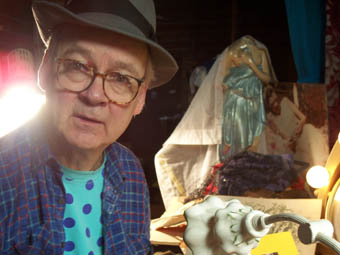 DreaMinimalist (Marie Losier, 2008)
DreaMinimalist (Marie Losier, 2008)Tony Conrad will discuss his radical breakthroughs in film, video, music and performance with
Branden W Joseph, Associate Professor of Modern and Contemporary Art at Columbia University, and author of
Beyond the Dream Syndicate: Tony Conrad and the Arts after Cage (Zone Books/MIT).
The discussion will include a screening of
DreamMinimalist (Marie Losier, 2008, 25 min), the latest in
Marie Losier's ongoing series of film portraits of avant-garde directors (Mike and George Kuchar, Guy Maddin, Richard Foreman). The film offers an insightful and hilarious encounter with Conrad as he sings, dances and remembers his youth and his association with Jack Smith.
at
Tate Modern
Bankside, London, SE1 9TG
Nearest Tube: Southwark / London Bridge / Blackfriars
MAP OF AREAScreenings & Discussion Tickets: £5 / £4 concessions
Performance Tickets: FREE, booking recommended (see above)
Box Office: 020 7887 8888
www.tate.org.ukLabels: london, tate, tony conrad






